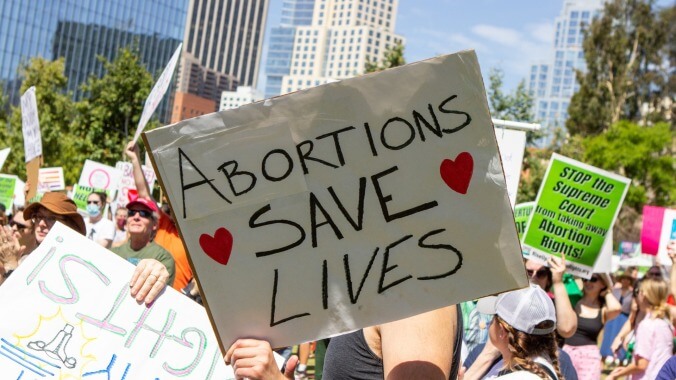Risk of Maternal Mortality Is Twice as High in Abortion-Banned States, New Study Says
In 2023, the first full year without Roe, the risk of maternal death in Texas was 155% higher than in California. Hmm, I wonder if there are any relevant policy differences between these two states...
Photo: Getty Images AbortionPolitics
Since the Supreme Court overturned Roe v. Wade in 2022, pretty much every awful thing we all predicted would happen has happened, or is starting to happen, and maternal mortality is sadly no exception. On Wednesday, the Gender Equity Policy Institute published a new report analyzing the CDC’s maternal mortality data from 2019 through 2023, which is the most recent full-year data set available. Per the report, mothers living in states that banned abortion are “nearly twice as likely to die during pregnancy, childbirth, or soon after giving birth, compared to mothers living in supportive states where abortion was legal and accessible.” Black mothers, meanwhile, are 3.3 times more likely than white mothers to die in these states.
The same report found that—unsurprisingly—maternal health is improving in states where abortion care remains legal: Maternal mortality fell by 21% in those states in the first full year after Dobbs v. Jackson Women’s Health. In 2023, mothers’ risk of maternal death in Texas was 155% higher than in California. This reflects some of the early data we’ve already seen out of Texas, for example, where, since the state’s six-week abortion ban took effect in 2021, maternal deaths in the state increased by 56% from 2019 to 2022, compared to an 11% increase nationwide during the same time period. Based on the Gender Equity Policy Institute’s analysis, that 11% increase seems to stem from abortion-banned states, while maternal mortality actually decreased in states where abortion remains legal.
“The right to control if and when to have children is foundational to women’s freedom; it is globally recognized as a fundamental human right,” the report states. “The number of women in America who die in pregnancy, childbirth, and soon after giving birth is tragically high. … As this report has documented, women in states that banned abortion are at significantly higher risk of maternal death, and longstanding racial disparities in maternal mortality are significantly worse in banned states.”
-

-

-

-

-

-

-

-

-

-

-

-

-

-

-

-

-

-

-

-

-

-

-

-

-

-

-

-

-

-

-

-

-

-

-

-

-

-

-

-








































